 |

>> NW Himalaya
>> Chile
>> NW Argentina
>> Kyrgyzstan
>> California
|

|
NW Himalaya
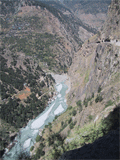 |
View to the west in the Baspa Valley, a major tributary to the Sutlej River. Note the road running ~800m above the present-day river level on the right hand side of the picture. The Baspa has a mean annual discharge of ~80 m3/s and has been dammed by several large landslide during the early Holocene intensified monsoon phase (~9 to 6 ka). |
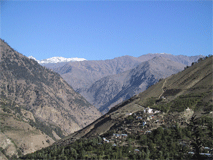 |
View to Morang, a village along the upper Sutlej River. The snow covered mountains in the back are in the Spiti Valley to the northwest.
|
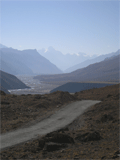 |
Upper Spiti Valley, the largest tributary to the Sutlej River. Note the massive fluvial fill-terraces in the middle of the photograph. These are of early Holocene age, as shown by our cosmogenic nuclide dating. |
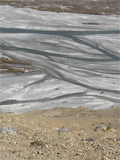 |
View towards the Spiti River from an early Holocene alluvial fill terrace about ~100m above the modern river. Presently, the Spiti transports only small grainsize in these low-gradient reaches. |
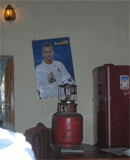 |
Do you play soccer? A poster of David Beckham inside the Tabo Monastry in the upper Spiti Valley.
|
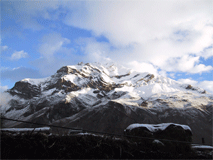 |
View to snow-covered, folded Tethyan Sedimentary rocks in the Pin Valley, a major tributary to the Spiti Valley. |
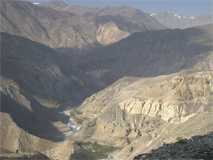 |
View to the north of the lower Spiti Valley, just to the southwest of the Leo Pargil Dome. The white sediments in the right middle ground of the photograph are fine-grained lacustrine deposits that were formed during a late Pleistocene intensified monsoon phase. At that time, a large landslide just downstream from where this image was taken, has dammed the Spiti river for several thousand years and resulted in ~140m of lake-sediment deposits. |
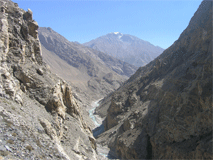 |
Lower Spiti River, several kilometers upstream of the confluence with the Sutlej River. The river is incising rapidly into bedrock.
|
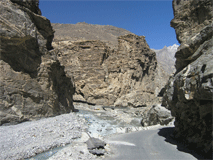 |
Spiti-Sutlej confluence with the Spiti coming from the left side. Note the different colors of the rivers indicating the varying amounts of suspended sediment transported.
|
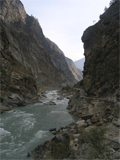 |
The upper Sutlej River, just downstream from the Spiti confluence. Here, the Sutlej is rapidly eroding into Tethyan Sedimentary rocks that result in narrow gorges. Note the road (National Highway 22) on the right-hand side.
|
<<
Chile
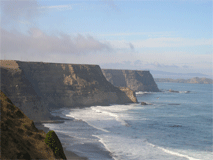 |
Pleistocene marine terrace on the Santa Maria Island, south-central Chile. |
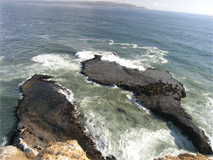 |
Recent marine abrasion platform on the southern tip of the Santa Maria Island. |
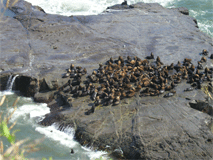 |
Marine abrasion platform inhabited by sun-bathing mammals. |
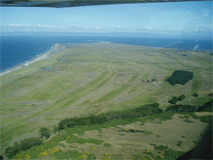 |
Holocene beach berms as viewed from an airplane on the Santa Maria Island. Note the coast-parallel features that are formed during winter storms - active tectonic deformation uplifts the island out of the reach of the erosive forces and preserve the beach berms. We have dated the geomorphic features to construct an earthquake record for the past ~5ka (approximately the time since sea level remained constant at a near-present day level). |
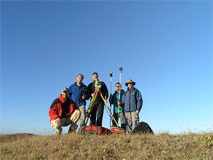 |
Team that surveyed the Holocene beach berms located in the eastern part of the Santa Maria Island (from left to right: Manfred Strecker, Helmut Echtler, Bodo Bookhagen, Marcos Moreno, Daniel Melnick). We have used a laser total station with two reflectors and collected nearly 10,000 elevation measurements. |
<<
NW Argentina
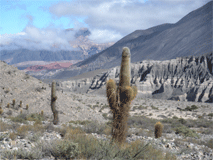 |
View of cut-and-fill terrace in the Quebrada del Toro (NW Argentina). |
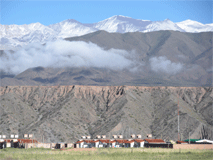 |
View of the snow-covered Nevado de Cachi in the Cachi Valley. In the foreground you see Late Pleistocene / Holocene fluvial fill terraces. |
<<
Kyrgyzstan
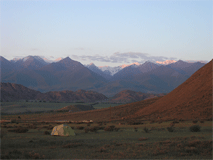 |
Campsite in the Kyrgyz Range. |
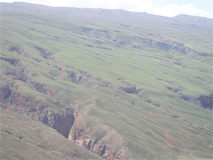 |
Incised channel in the Gory Baybieche region (central Kyrgyzstan). |
<<
California
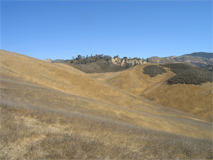 |
The gently rolling hills of the Sedgwick Reserve in the Santa Ynez Valley, about an hour drive away from Santa Barbara. The Reserve is part of the University of California Natural Reserve System. In this region, we have performed a detailed terrestrial laser scanner (TLS) survey to construct a ~20-cm digital elevation model (DEM). |
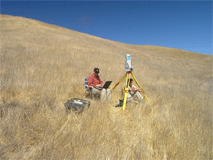 |
Burch Fisher and Vincent Godard working hard with the terrestrial laser scanner (TLS). There is a laptop connected to the scanner and a car battery standing below the tripod. |
|
|
|
|
|
|
<<
|
|

